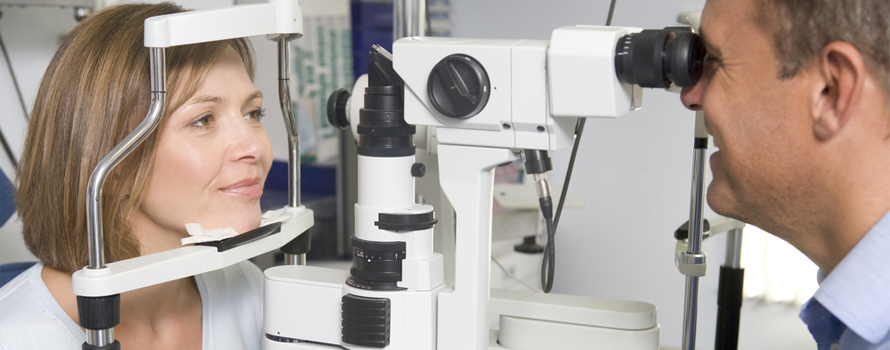
Regular screening can prevent blindness
People with diabetes should be screened regularly to prevent serious eye problems developing.
Diabetes increases the incidence of blindness to 25 times that of the person without diabetes. Everyone with diabetes should have an annual eye examination for retinopathy screening to provide an effective safety net against the development of blindness.
Around 2% of all people who have had diabetes for at least 15 years can expect to become blind. A further 10% or so will develop severe visual impairment.
Leading cause of blindness
Eye disease in people with diabetes (diabetic retinopathy) is the leading cause of blindness and visual impairment in adults in developed countries.
However, undergoing an eye examination once a year can make all the difference. If complications in the eye are detected at an early stage, further damage can be prevented.
No obvious signs
Diabetic retinopathy is an asymptomatic disorder in the early stages; in other words there are no obvious signs or symptoms. Its detection relies on regular retinal examination by trained screeners.
But what exactly causes retinopathy? The condition is due to a complex series of changes that occur within the blood vessels of the retina, which is the light sensitive layer of the eye. These are caused by prolonged periods of high blood sugar levels.
These prolonged periods cause damage to the small blood vessels in the retina. Initially these blood vessels become leaky and sometimes they may even become blocked off. The leaking causes haemorrhages and can also lead to a leakage of fats from the vessels to the retina. It may also cause swelling of the retina itself.
Blocked blood vessels
The blocked blood vessels can starve the retina of vital oxygen. This in turn can lead to the growth of new abnormal vessels from the retina and a diagnosis of retinopathy.
The majority of people with diabetic retinopathy have adult onset type 2 diabetes, but it does occur in people with type 1 diabetes after puberty. Young people with diabetes can lose their sight within a few years of the onset of diabetes if it is poorly managed.
Those with diabetes are at high risk
In fact, 25% of young people who have type 1 diabetes will develop retinopathy of variable extent within 10 years of the diabetes diagnosis. In contrast 50% of people with type 2 will also develop the eye disease within 10 years.
Pregnant women with diabetes are also a high risk group, as they seem to suffer from the consequences of the hormonal changes associated with pregnancy.
80% of visual loss is due to diabetic maculopathy a type of retinopathy mainly associated with type 2 diabetes. Maculopathy is the development of swelling or the loss of circulation at the macula, which is the most sensitive part of the retina and is required for fine vision – for reading for example.
Proliferative retinopathy is more common in type 1 diabetes and 70% of these eyes go totally blind if left untreated. Proliferative retinopathy is the abnormal growth of new blood vessels on the retina.
Good diabetes control reduces risk
While the incidence of retinopathy cannot be eliminated altogether, it can be greatly reduced by tight control of blood sugar levels and in people with type 2 diabetes, by tight control of blood pressure.
Early retinopathy can be treated with lasers, in a procedure known as laser photocoagulation. This is particularly effective in the treatment of proliferative retinopathy. Most successfully treated people have no visual deterioration after 10 years.
While the use of lasers is less effective in treating maculopathy, it still provides a relatively high rate of long-term success.
A person with advanced retinopathy may require an operation called a vitrectomy. This is used to clear blood from in front of the retina, followed by the use of lasers.
Only 1% of people with diabetes will develop the type of retinopathy that requires a vitrectomy.
Make sure you get access to eye screening
Most people with diabetes are aware of the importance of eye care, however, they may lack the insider knowledge of the workings of the health service when it comes to accessing retinopathy screening.
The deficiency is often with the healthcare professional, who can fall into the old trap of assuming that someone else is responsible for the eye care of the person with diabetes and does not suggest referral, as the patient is not complaining.



